Snowflake and Partners Develop Award-Winning Solution to Give Telecoms and Consumers the Power to Reduce Carbon Emissions with Generative AI
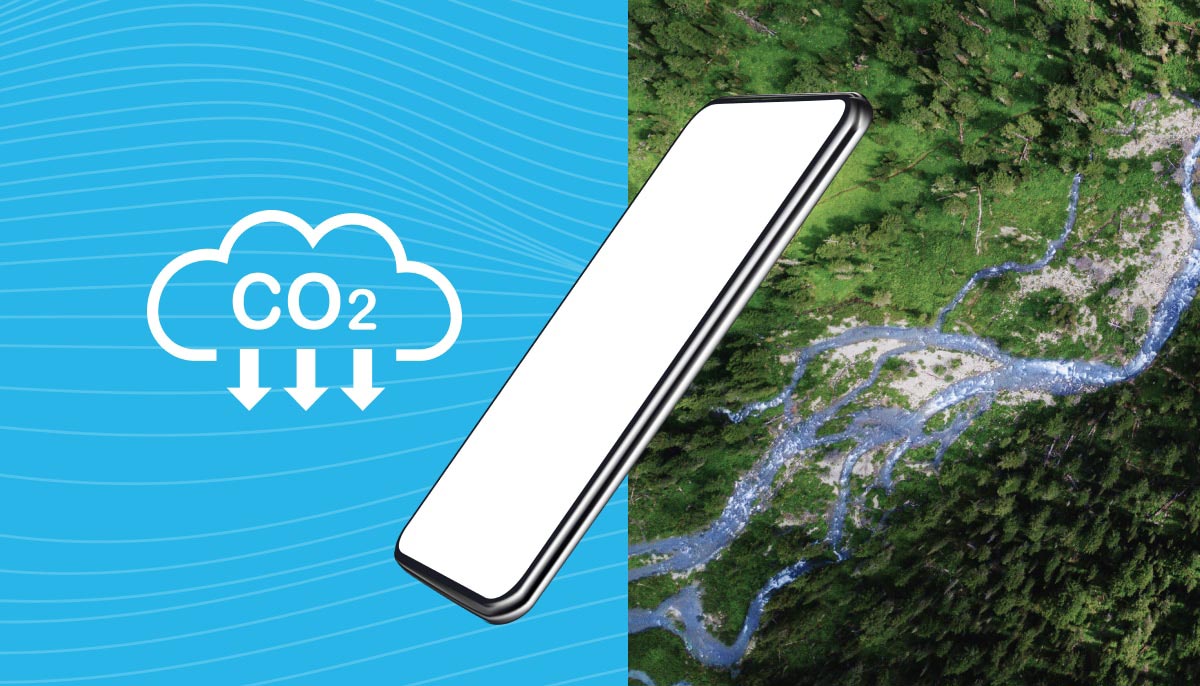
In the age of climate consciousness, industries worldwide are grappling with the urgent need to reduce their carbon footprints. One industry that has come under increased scrutiny is telecommunications, where Scope 3 emissions, or the indirect emissions that occur in a company’s value chain that the company has no direct control over, alone account for a staggering 85% of a typical telecom company’s carbon footprint. Now, with generative AI technology, the industry can begin addressing its carbon footprint more effectively.
To help accelerate innovative solutions to industry challenges, TM Forum, a non-profit telecom industry standards body, runs a catalyst program. The program consists of rapid-fire, member-driven proof-of-concept projects that inform and leverage TM Forum best practices and standards that connect service providers, technology suppliers and global enterprises to create industry-leading solutions.
Partnering to win
Snowflake, Amazon, Amdocs, Carbon Footprint and Vodafone joined forces to address this moonshot catalyst “Digital Carbon Footprint Optimization” head-on, aiming to transform the industry by making meaningful strides toward sustainability. And together, we won the award for the best Moonshot catalyst for the energy challenge on September 21, 2023, at the DTW23 - Ignite event by TM Forum. Keep reading to learn about the solution and how your telecom can integrate the solution.
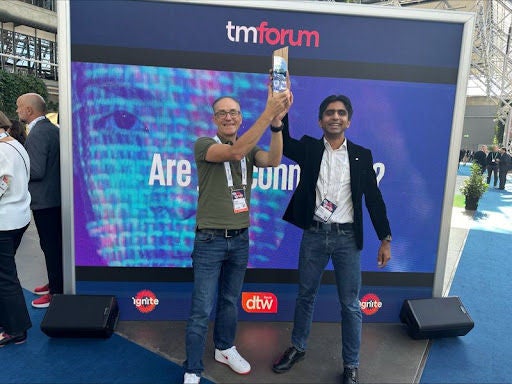
The telecom industry’s carbon footprint challenge
Measuring and reducing Scope 3 emissions is an ever-growing requirement for Communication Service Providers (CSPs) around the world. But how can you minimize Scope 3 if you don’t know the impact? Our Digital Carbon Footprint Optimization catalyst enables CSPs to lower Scope 3 emissions in their product offerings by empowering customers to make lower carbon choices. Leveraging Amdocs’ Catalog, real-time data, AI and generative AI, CSPs can now build more sustainable offerings and provide consumers with ongoing data and analytics based on carbon emissions (CO2).
For example, a standard smartphone battery consumes 14.46 watt-hours of energy every 24 hours, according to the U.S. Department of Energy (DOE 2020). And, according to the U.S. Environmental Protection Agency, the carbon emissions for each smartphone are about 8.22 x 1,000,000 metric tons annually. There are more than 300 million smartphones in the United States alone. At this rate, smartphones generate nearly 2,500 metric tons of CO2 per day in the U.S. alone. This daily figure translates to 900,000 metric tons of CO2 per year from smartphone charging. As a comparison, an average car emits 4.6 metric tons of CO2 per year. Multiply this by the 6.92 billion smartphone users worldwide today and the impact is tremendous.
A game-changing collaboration
This was truly a team effort, and our collective objective for the catalyst was to:
- Analyze CO2e data: Utilizing the power of TM Forum Open APIs, the solution enables telecom companies to analyze and understand their carbon emissions comprehensively.
- Reduce carbon footprint: By pinpointing areas for improvement, the platform assists telecom companies in reducing the carbon footprint of their product offerings.
- Empower consumer choices: The solution offers personalized recommendations to consumers, guiding them toward lower carbon choices when it comes to telecom services.
- Influence consumer behavior: The platform encourages customers to make eco-friendly choices through these recommendations and transparent carbon data, thereby reducing Scope 3 emissions (for example, by showing them their battery usage trends and battery charging habits).
- Leverage sustainable cloud infrastructure: By using product catalogs and channels via sustainable cloud infrastructure, the solution further decreases the carbon footprint of the telecom industry.
How do networks impact the battery life of smartphones?
There are four key elements of the network that have a direct effect on how smartphone batteries perform:
- Signal strength: Smartphone devices use more battery power to search for a better signal when the signal strength is poor.
- Data transfer: Smartphone devices use less battery power when data transfers complete quickly.
- Inefficient networks: Older networks are less efficient at transmitting data, so smartphone devices expend more battery power to use them.
- Network congestion: Smartphone devices use more battery power to establish a stable connection in congested areas.
The solution in action
The carbon coefficient data is sourced from niche sustainability consulting firm Carbon Footprint. This solution leverages a combination of gen AI, machine learning and TM Forum Open APIs to analyze CO2e data from multiple sources captured inside the Snowflake platform. It then creates a detailed carbon footprint profile for each telecom product offering in the catalog, continuously updating in real-time. It captures the battery health, charging and usage habits through the smartphone application of the telecom service provider. Amazon Sagemaker is used to run predictive analytics on the usage data, while Amazon Quicksight is leveraged to build interactive dashboards.
Consumers receive tailored recommendations based on their usage patterns and preferences. Through the integration of gen AI models, users can get further assistance based on conversational gen AI. Data analytics capabilities are turned into predictive insights available to the CSPs’ business users as they configure offerings in Amdocs Catalog.
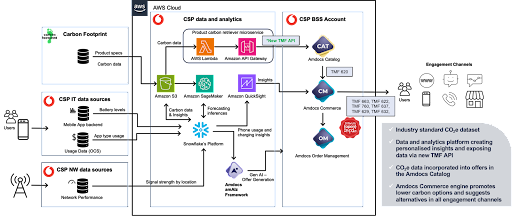
Data visualizations
Using Amazon Quicksight, the team built different dashboards to highlight the correlation between network optimization and battery consumption. We also offer insights back to the consumer on how their charging habits compare with other consumers with similar handsets.
CSP-centric visualizations
Following are some visualizations highlighting the correlation of network optimization and its impact on battery health. The visualizations also demonstrate which cell sites are most optimally configured versus which ones would need a little attention. The visualizations also show the prediction of battery consumption on different cell sites.
The graphs below show the correlation of network optimization to battery drainage, illustrating the best and the worst performing cell sites from a battery consumption point of view. The bottom charts show a predictive aspect of battery usage as well.
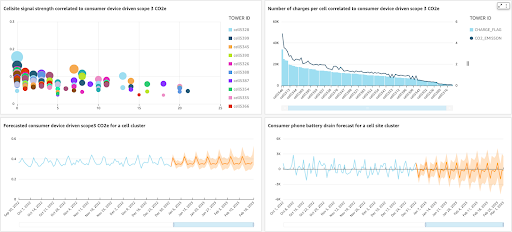
Consumer-centric visualizations
These visualizations would help a telecom product manager or network engineer optimize the network at a strategic level. We can also build visualizations at each individual customer level through the CSP mobile app, allowing the consumer to see how their actions are impacting battery consumption, and how they stack up against users of similar devices. Such transparency will result in consumers making informed choices about their smartphone usage and battery charging habits.
The graphs below show the frequency of daily battery charges and the resulting carbon emissions at an individual smartphone level for the end consumer. The bottom charts show the predictive battery utilization for the particular smartphone.

Solution benefits
The Digital Carbon Footprint Optimization Solution unlocks a host of benefits for the telecom industry:
- Reduced carbon footprint: Telecom companies can significantly reduce the carbon footprint of their products and services.
- Enhanced customer satisfaction: Meeting the growing demand for sustainable products and services boosts customer satisfaction.
- Elevated brand value: Telecom companies adopting sustainable practices enhance their brand value and attract new customers.
- Regulatory compliance: The solution helps companies meet their obligations to comply with environmental regulations, such as the EU’s Emissions Trading System.
- Carbon labeling: This project enables CSPs to create, launch and promote lower carbon offers, significantly reducing Scope 3 emissions by making different stakeholders aware of their carbon emissions through carbon labeling.
The future of sustainable telecom
Consumers are demanding more and more transparency from large organizations. We expect that in the not-so-distant future, carbon energy labels like the one below will become the norm in the telecom sector. A consumer would demand to see the energy footprints of the products and offers before buying any products.
The label on the left below is the EU energy label that provides the energy efficiency information of a product. It rates products from dark green (most efficient) to red (least efficient). Our vision for the near future is that consumers of telecom products will demand similar carbon labels, as illustrated on the right.
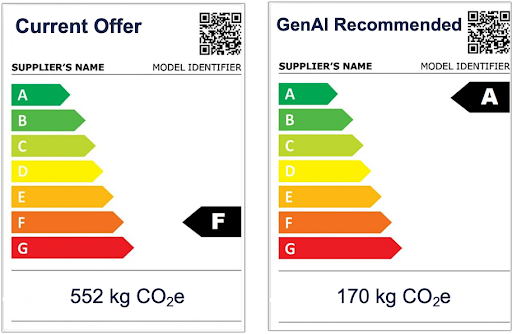
In the quest for sustainability, the telecom industry can take a significant leap forward. Data and AI within cloud-native solutions can revolutionize the sector, offering both environmental benefits and business advantages. In the future, carbon transparency will no longer be optional. As consumer demand for eco-friendly options grows, this project sets the stage for a more sustainable future.
To learn how you can harness the power of data to implement sustainability solutions, visit Snowflake Telecom Solutions. To get the latest on bringing gen AI and LLMs to your data, attend Snowflake’s Generative AI & LLM School.
